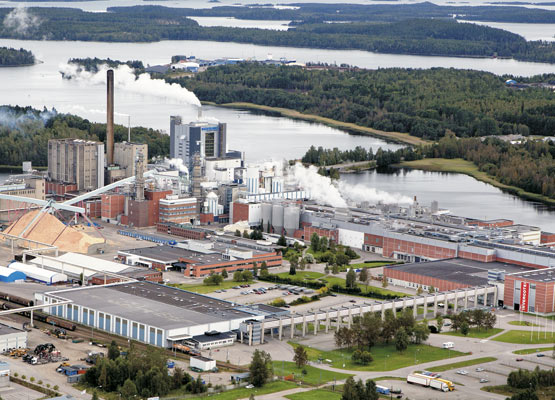Packaging material a key issue for the climate
/ins Switching material from plastic to paperboard can reduce a packaging’s climate impact by 99 per cent. For people who influence the choice of packaging material, this single choice can make the biggest climate impact during a product manager or designer’s entire professional career. That’s the conclusion of a study done by IVL Swedish Environmental Research Institute for Iggesund Paperboard.
The starting point was to study some of the commonest packaging types and compare the differences in climate impact depending on the choice of packaging material.
“There are tables giving carbon dioxide emissions per kilo of material, but when you compare real examples of packaging, you realise the great importance of the choice of material,” comments Johan Granås, Sustainability Director at Iggesund Paperboard.
“Plastic is a fantastic material for many applications and we use it ourselves when producing paperboard for food packaging that needs a thin plastic barrier to protect its contents,” he adds. “But we believe that decision makers in the packaging industry must know about the effects of their choice of material.”
Packaging light bulbs in plastic or paperboard respectively is the most extreme example in the survey. By switching from plastic to paperboard, it is possible to reduce the climate impact of the packaging by 99 per cent. In the example that was most favourable for plastic, a paperboard carton containing 500 grams of pasta was compared with the corresponding amount of pasta packed in a thin plastic bag. The conclusion was that the plastic bag has a 3.25 times larger climate impact than the paperboard carton. This is despite the fact that the bag only weighs one-sixth as much as the carton and has significantly worse protective and stacking properties.
“There are masses of packagings that cannot be made in anything other than plastic today,” Johan Granås emphasises. “But there are also packagings that are made of plastic where it is easy to switch material without losing function at all – and it is logical to start there if we want to reduce packaging’s climate impact.”
For the paperboard packagings used in the study, climate data for Iggesund’s paperboard Invercote was used. For the plastic materials, IVL drew on data from the databases used for doing lifecycle analyses. None of the paperboard packagings used in the study is made of material from Iggesund Paperboard.
“This is a study that shows the climate impact of different types of packaging. The mandate to IVL was to be general. Neither they nor we know the climate data for each individual packaging. However, based on the recognised environmental databases, this definitely indicates the great importance of the choice of material,” Granås concludes.
IVL Swedish Environmental Research Institute was jointly founded in 1966 by the Swedish government and industry to do research into industry’s air and water management issues. Today IVL is an environmental institute that focuses on the interplay between environmental, economic and social perspectives.
Caption: “Some packagings are made of plastic where it is easy to switch material without losing function at all – and it is logical to start there if we want to reduce packaging’s climate impact,” stresses Johan Granås.
Caption 2: In extreme cases, switching packaging material from plastic to paperboard can reduce a packaging’s climate impact by up to 99 per cent.
Iggesund
Iggesund Paperboard is part of the Swedish forest industry group Holmen, one of the world’s 100 most sustainable companies listed on the United Nations Global Compact Index. Iggesund’s turnover is just over €500 million and its flagship product Invercote is sold in more than 100 countries. The company has two brand families, Invercote and Incada, both positioned at the high end of their respective segments. Since 2010 Iggesund has invested more than €380 million to increase its energy efficiency and reduce the fossil emissions from its production.
Iggesund and the Holmen Group report all their fossil carbon emissions to the Carbon Disclosure Project. The environmental data form an integral part of an annual report that complies with the Global Reporting Initiative’s highest level of sustainability reporting. Iggesund was founded as an iron mill in 1685, but has been making paperboard for more than 50 years. The two mills, in northern Sweden and northern England employ 1500 people.
Further information:
Staffan Sjöberg
Public Relations Manager
staffan.sjoberg@iggesund.com
Iggesund Paperboard
SE-825 80 Sweden
Tel: +4665028256
Mobile: +46703064800
www.iggesund.com












Let us know if you are going to use this press release. Thank you!